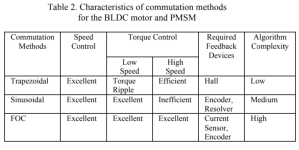Started this thread so fans of the MAC/GMAC (like me) can share information about hot rodding the motors. Below is some of my experience to date...please share your experiences so we can all learn  .
.
One reason I really like the MAC/GMAC is that it produces more torque per amp than any other motor which means more acceleration and more FUN IMO.
I have an 8T MAC I am currently using for a build and I have done most of my work so far with a 12T MAC. The maximums I have run so far with my 12T MAC that I bought Jan 2017 are:
A. Max Voltage: 58.8v...but I hope to try a 20s (72v) battery in the near future.
B. Max Amperage: 60A battery and 180A phase...but had to drop to 50A/180A settings due my BMS limitations. I ran a 12 FET 3077 Infineon controller for a long time and used an 18 FET 4110 Infineon controller when I went above 40A. No problems with the clutch or gears. I greased the gears using Mobil SHC 100...same base stock (oil) as Mobil 28 but it uses a Lithium Soap thickener instead of the Clay thickener in the Mobil 28. The Engineers at Mobil suggested the SHC 100.
C. Largest OD tire: 750mm...it was a Maxxis Hookworm 29x2.5".
I weigh about 210 lbs ready to ride and my bike weighs 62 lbs. The bike was born as a Mongoose Terrex from Walmart...steel frame hardtail :wink: .
There are potential problems with the MAC clutch if you ride off road and beat the crap out of the motor which I documented here: https://endless-sphere.com/forums/viewtopic.php?t=104226
I tried liquid cooling my MAC with both Low Viscosity Automatic Transmission Fluid (ATF) and later with a mix of distilled water and Motul brand "MoCool" corrosion inhibitor...both worked but have potential problems...leakage of the ATF will make your brakes stop working and although the water/MoCool worked and I had no issues, I only ran it for about six months so the long term affects are TBD plus you need to check the fluid level occasionally to ensure that you are thermally connecting the motor to the shell...this takes about 4.5 ounces of fluid. My experiments with the Low Viscosity ATF are documented is this thread on page 77: https://endless-sphere.com/forums/viewtopic.php?f=2&t=48753&p=1337584&hilit=atf+mac+terrex#p1337584 I did the same thing with the water/MoCool mixture after a little ATF got on my brake disc and my brakes quit working .
.
ANY AND ALL MAC AND GMAC HOT ROD INFO IS WELCOME AND APPRECIATED...PLEASE SHARE YOUR EXPERIENCES AND INFORMATION .
.
One reason I really like the MAC/GMAC is that it produces more torque per amp than any other motor which means more acceleration and more FUN IMO.
I have an 8T MAC I am currently using for a build and I have done most of my work so far with a 12T MAC. The maximums I have run so far with my 12T MAC that I bought Jan 2017 are:
A. Max Voltage: 58.8v...but I hope to try a 20s (72v) battery in the near future.
B. Max Amperage: 60A battery and 180A phase...but had to drop to 50A/180A settings due my BMS limitations. I ran a 12 FET 3077 Infineon controller for a long time and used an 18 FET 4110 Infineon controller when I went above 40A. No problems with the clutch or gears. I greased the gears using Mobil SHC 100...same base stock (oil) as Mobil 28 but it uses a Lithium Soap thickener instead of the Clay thickener in the Mobil 28. The Engineers at Mobil suggested the SHC 100.
C. Largest OD tire: 750mm...it was a Maxxis Hookworm 29x2.5".
I weigh about 210 lbs ready to ride and my bike weighs 62 lbs. The bike was born as a Mongoose Terrex from Walmart...steel frame hardtail :wink: .
There are potential problems with the MAC clutch if you ride off road and beat the crap out of the motor which I documented here: https://endless-sphere.com/forums/viewtopic.php?t=104226
I tried liquid cooling my MAC with both Low Viscosity Automatic Transmission Fluid (ATF) and later with a mix of distilled water and Motul brand "MoCool" corrosion inhibitor...both worked but have potential problems...leakage of the ATF will make your brakes stop working and although the water/MoCool worked and I had no issues, I only ran it for about six months so the long term affects are TBD plus you need to check the fluid level occasionally to ensure that you are thermally connecting the motor to the shell...this takes about 4.5 ounces of fluid. My experiments with the Low Viscosity ATF are documented is this thread on page 77: https://endless-sphere.com/forums/viewtopic.php?f=2&t=48753&p=1337584&hilit=atf+mac+terrex#p1337584 I did the same thing with the water/MoCool mixture after a little ATF got on my brake disc and my brakes quit working
ANY AND ALL MAC AND GMAC HOT ROD INFO IS WELCOME AND APPRECIATED...PLEASE SHARE YOUR EXPERIENCES AND INFORMATION



